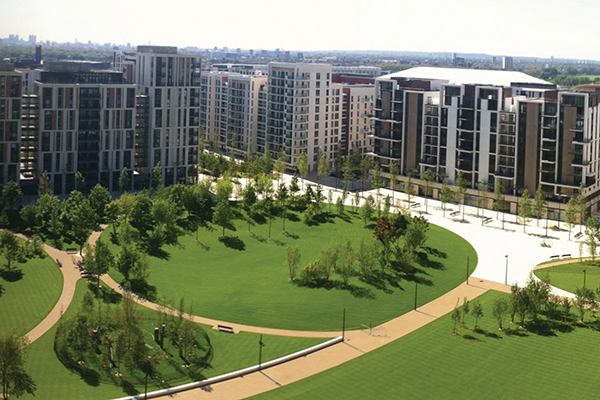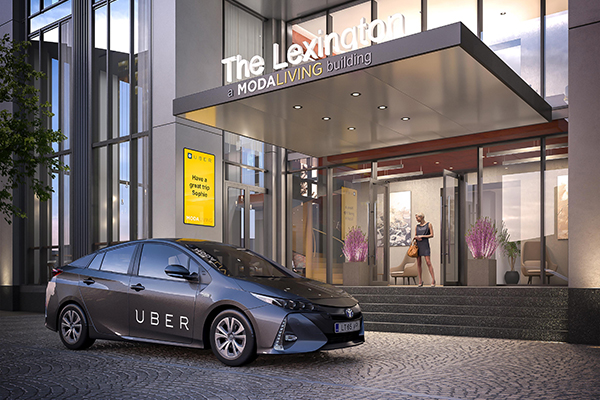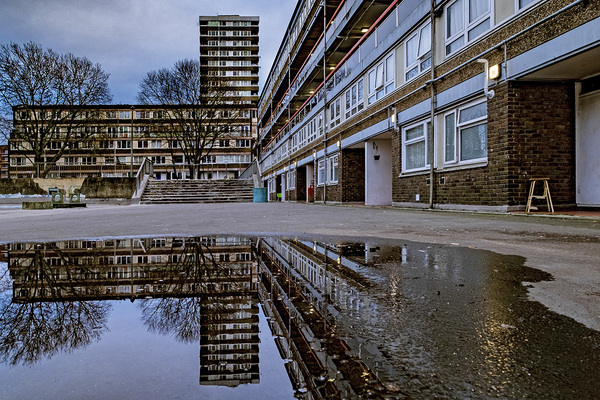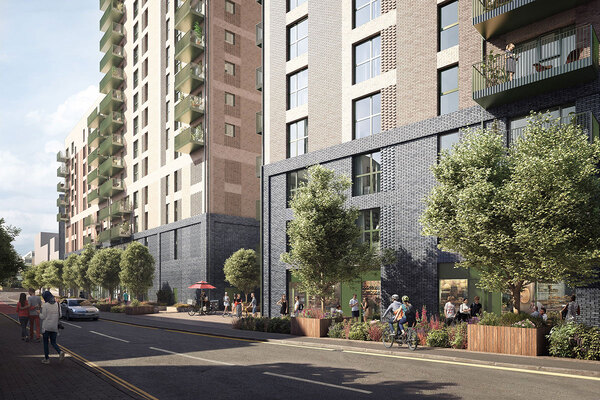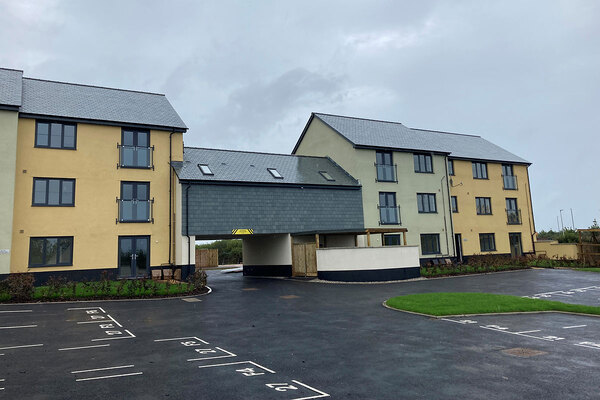You are viewing 1 of your 1 free articles
Build-to-rent: new kids on the block
Early entrants to the build-to-rent market are introducing innovations as they look to differentiate from private renting of the past. Nick Johnstone looks at what’s on offer
Free superfast broadband; complimentary taxi rides; dedicated phone apps; parties every month; no deposits, agency fees, council tax or utility bills…
These are just a few of the perks that developers are factoring in to their schemes in the emerging build-to-rent sector. The British Property Federation estimates that as many as 70,000 build-to-rent units are either built, under construction or in planning in the UK. After many years of gestation, the market is now beginning to mature and really innovate.
For example, it emerged last week that Moda Living had tied up with Uber to provide £100 a month in taxi vouchers if tenants forewent a parking space. Legal & General (L&G) is proposing to let its tenants keep ownership of furniture - free of charge - if they stay on at their schemes for five years. To differentiate itself, Get Living London last week took the new step of scrapping security deposits at a 1,439-home scheme in the former Olympic Park in Stratford, east London.
Housing associations should take note: the build-to-rent market, in which social landlords are increasingly dabbling, is becoming more competitive, long-term and customer-focused than the buy-to-let sector that has preceded it. Inside Housing delves into some of the idiosyncrasies of the new world of the institutional-grade private rented sector (PRS) to find out more.
Nick Whitten, associate director in the research department at JLL, says although housing associations will not necessarily deliver stock with all the bells and whistles, it is important to follow the innovations taking place elsewhere in the market.
“At the early onset of build-to-rent, a lot of the chat was around ‘what level of service can we offer?’.
“More and more developers are incorporating mobile and tech into their services. It doesn’t have to cost a lot of money to bring in an innovation, so I’m sure there will be a degree of innovation that is mimicked in the [housing association] sector.”
It has taken some time to reach the point where institutional PRS is being delivered at scale. Back in 2013, Get Living London became the first operator to launch a full-scale PRS scheme at the former athletes’ village in Stratford, and took a first step towards offering ‘customer service’ to its tenants. It scrapped agency fees, allowed tenants to decorate their own homes and tagged rental increases to the Consumer Price Index. Now, though, these basic practices have become sector standard.
Leases are getting longer too, as both landlords and tenants seek security of tenure. Get Living London’s standard lease is three years; at L&G’s Salford scheme, the very first lease signed was a whopping five years in length - this type of lease length is unheard of in the traditional buy-to-let sector.
Investing in quality
The physical nature of the property being developed differs significantly from received wisdom around building for sale: the most crucial difference is long-termism. It sounds obvious, but it percolates through the entire build process, from initially securing a site in the right location to choosing how to fit the kitchen.
If you’re a landlord planning to hold on to your stock 40 or 50 years into the future, then things like repairs, maintenance and sustainability are much more important.
Dan Batterton, fund manager at L&G, says the company is putting “more money into the things you don’t see” in order to reduce long-term running costs. That includes putting in higher quality kitchens and spending more time on plumbing and electricity. The pension fund manager is also having bespoke furniture designed.
“More and more developers are incorporating mobile and tech into their services," Nick Whitten
Another sector pioneer, Essential Living, has flown its staff out to Italy to check out bathroom tiles and wood-effect flooring.
Harry Downes, managing director of Fizzy Living, which is owned by Thames Valley Housing, says he spends less time worrying about the superficial and visual aspects of a development and more time thinking about the operation of the building.
He explains: “If you’re building to sell, you’re bigging up things like cladding. When you’re building to rent, it’s all about how well the building operates. I need to be sure that the [boiler] room is like an operating theatre. That, to me, is more important than the decoration of the lobby.”
Fizzy Living focuses on young professionals aged 25 to 34; Mr Downes says having a specific target audience makes it easier to design the flats and decide on the level of amenity, as the properties would be designed differently if catering for families or older people. L&G is more agnostic about who occupies its flats.
Key innovations
- Leases that last longer than one year, with the tenant having the option to break at any time, giving notice of one to two months
- No added ‘nasties’ such as one-off letting agent fees
- Free wi-fi and other utility bills included in the rent
- Mobile phone apps that allow tenants to communicate with the building manager
- More amenity space, such as partying rooms that can be booked out by tenants
- A greater degree of attention to the durability and sustainability of the buildings at design stage
- Allowing tenants to decorate their homes without fear of losing deposits
- Community events to encourage greater integration between neighbours
Then there’s the nitty-gritty of customer service. Do you allow tenants to have pets? How many permanent staff do you have on the site? How does someone report a fault? Can someone take care of my laundry?
The more positive answers you can give to these questions, the better the customer satisfaction. Platform, a build-to-rent brand set up in 2016 which is aiming for 1,000 units a year, is looking to attract younger tenants into its schemes with its ‘affordable luxury’ concept.
It tries to consider all five senses when delivering its homes. This extends from smell (trying to avoid furniture or fresh paint smells) to sound (making sure the right music is playing in the lobby). There’s even a mobile phone app that allows tenants to easily report faults, and it’s now standard practice to have an on-site building manager at schemes - seven days a week. It’s also par for the course to put on events programmes in order to cultivate a sense of community and belonging.
“It shouldn’t be treated as social housing as the long-term tenancy rights are different," Elizabeth Froude
Housing associations, it’s fair to say, haven’t got so far in evolving their PRS offerings. However, many of the vagaries around build-to-rent - such as long-term asset management - will be familiar to the social sector.
L&Q, which has a target of delivering 25,000 PRS units over the next 10 years, is expecting to “pepper-pot” these units throughout its developments, rather than having them as standalone blocks, according to Lukman Ahmed, PRS and commercial director at the landlord. He says that at this stage, L&Q’s PRS stock will look no different to its other products, but that L&Q was also looking at the more Americanised multi-family model.
Housing associations may want to be cautious - and conscious of not being preferential in how they treat PRS tenants versus general needs occupiers. Elizabeth Froude, deputy chief executive of Genesis, which has 1,000 PRS units in its portfolio, says: “It shouldn’t be treated as social housing as the long-term tenancy rights are different. At our Stratford Halo scheme, we have 44 floors of PRS, and this has a separate concierge service, as people are paying more.”
The all-important question of money is pertinent. After all, some of these PRS schemes are high-end products that aren’t necessarily answering to the bulk of the housing crisis. Take Fizzy Living - at £42,000, its tenants’ average earnings are significantly higher than the London average wage of £34,000.
JLL’s Mr Whitten suggests that there is a big demand for mid-market rentals, which could be filled by the housing sector. He says: “There is a big market for budget, no-frills stock, focused on affordability and security of tenure. The [housing associations] are big on this kind of thing.”
As the market continues to develop, more price points and innovations will emerge. Where the housing associations entering this market position themselves on this scale, and what they offer as a result, will be crucial in determining their success.


